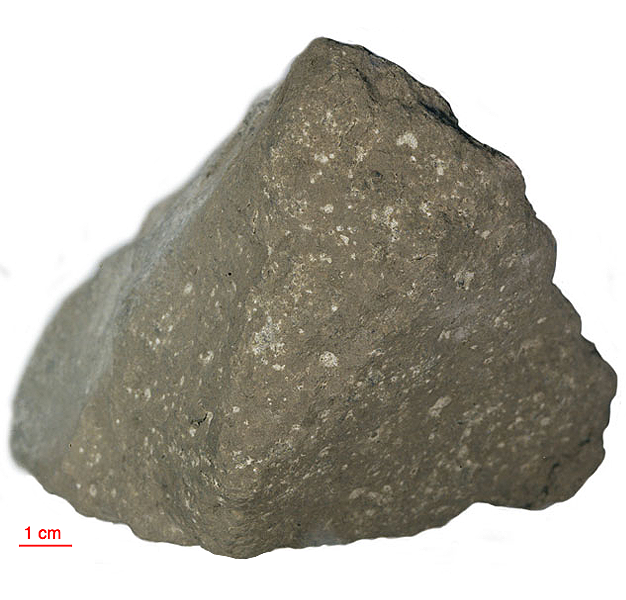
Fact sheet
Sample 65015 is a feldspathic, impact melt breccia that was collected from the lower slope of Stone Mountain during the Apollo 16 mission. It was half buried in soil when discovered and the exposed surface is covered with micrometeorite zap pits. It has proved difficult to accurately date 65015 because of its included old component, but there is agreement between investigators that the rock was last melted or metamorphosed around 3.9 billion years ago.
In thin section, the rock has a poikilitic texture consisting of larger pyroxene crystals enclosing mainly plagioclase feldspar clasts; the remainder are lithic clasts.
Further details of this and other Apollo samples are here: http://curator.jsc.nasa.gov/lunar/
The Apollo 16 landing site was in the hilly region around Descartes crater in the lunar highlands. The landing spot was chosen to allow the astronauts to gather geologically older lunar material (Descartes Formation and the Cayley Formation) than the samples obtained in the first four landings, which were in or near lunar maria.
The mission lasted 11.1 days, with a stay on the lunar surface of 71 hours. The crew were on the lunar surface for 20.2 hours during which they traversed approximately 27 kilometers and collected approximately 96 kilograms of samples.
Apollo 16 was launched on 16 April 1972.






